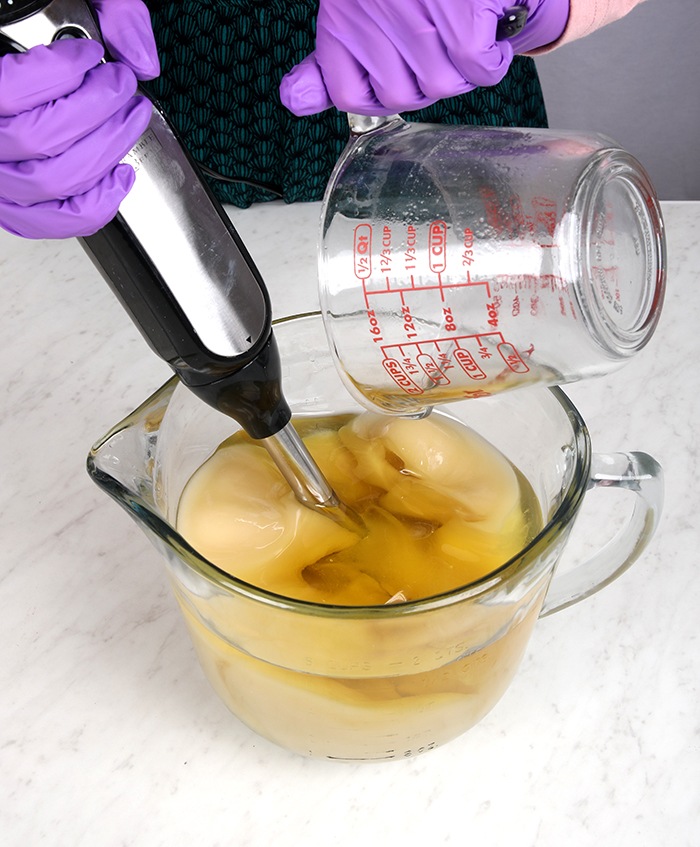
At Bramble Berry, we've made it our mission to share the benefits of homemade soap. There's nothing quite like cutting into your first batch and seeing what you created - except getting to use it in the shower, of course. There are options for every budget and skill level. Learn how to make your own soap in this article.
Why make soap?
Simply put, homemade soap just feels better. Most store-bought bars don't meet the FDA's definition of soap because they're actually detergents. The ingredients can leave your skin feeling dry and irritated. True cold process soap is made by combining oils and sodium hydroxide lye. That causes a chemical reaction called saponification. Homemade bars feel silky and moisturizing.
Another benefit is customization. You can add the oils that are best for your skin type. If you have sensitive skin, skip the color and fragrance. It's all up to you!
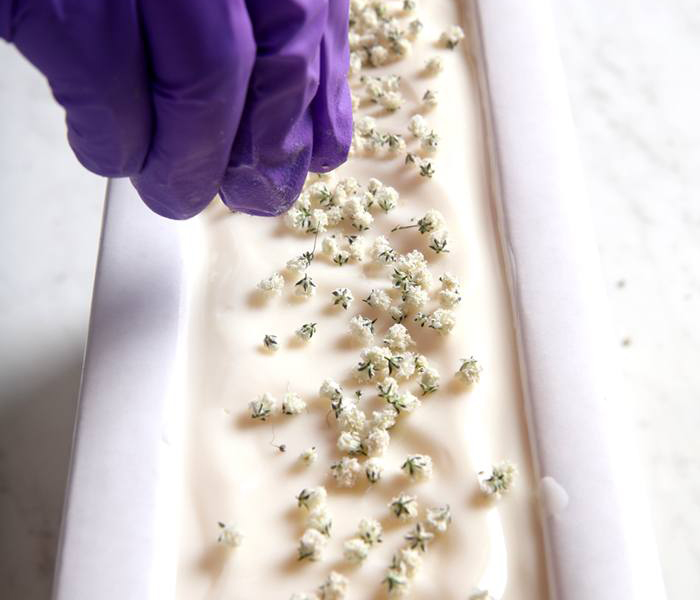
What equipment you need
Another benefit - making a 3-pound batch of soap is more cost-effective than buying individual bars from the store. There are some up-front costs when you're just getting started, but you can stick with the basics if you're on a budget. Find tools and accessories here.
Here's what you need:
- Safety gear - gloves, goggles, long pants and shirts, and close-toed shoes. This is non-negotiable. Lye is a caustic chemical, so it needs to be handled properly. Some makers also like to use a mask.
- A large heat-safe container that's made of glass, plastic, or stainless steel
- Several small heat-safe containers - feel free to use old Mason jars, peanut butter jars, etc.
- A stick blender. You can emulsify the oils and lye with a hand or stand mixer, but it takes hours. A stick blender gets the job done in just a minute or two.
- A scale
- A thermometer. Infrared options are easier, but you can use a candy thermometer if it's all you have.
- Stainless steel spoons
- A few whisks and spatulas
- Measuring spoons
- A mold. Recycled molds are a great option - you can use yogurt containers, milk cartons, etc. Just make sure they're heat safe and flexible so you can get your bars out. Also, avoid aluminum. It doesn't react well with lye.
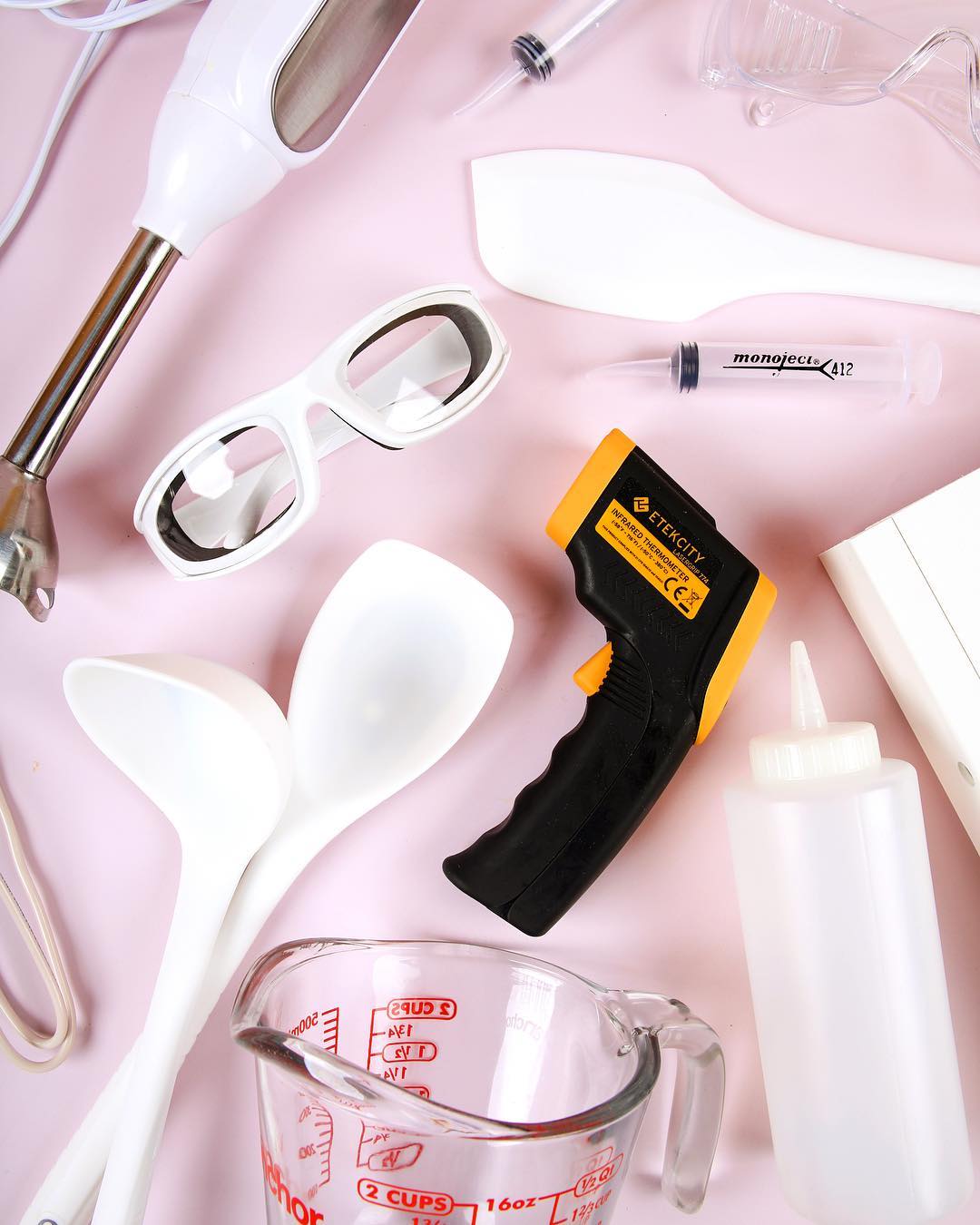
That's it! After you get a few batches under your belt, you can invest in more equipment like molds and specialty containers. Once you use this equipment for soap, don't use it for food. Lye and fragrance can get stuck in the cracks, even with thorough washing.
How to formulate a recipe
This process can definitely be intimidating. Technically, all you need is oils, sodium hydroxide lye, and distilled water. However, there are tons of oils to choose from, and each one has different properties. Learn more in the Beginner's Guide to Common Soap Making Oils article.
Start simple. You can never go wrong with a 34/33/33 ratio. That’s 34% olive oil, 33% coconut oil, and 33% palm oil. It creates a firm, moisturizing bar with great bubbles. From there, you can start experimenting and adding your favorite oils. The Formulating Cold Process Soap Recipes will help.
If you want something even easier, pick up our Quick Mixes. All you have to do is melt and measure them – no need to worry about buying individual oils or formulating a recipe.
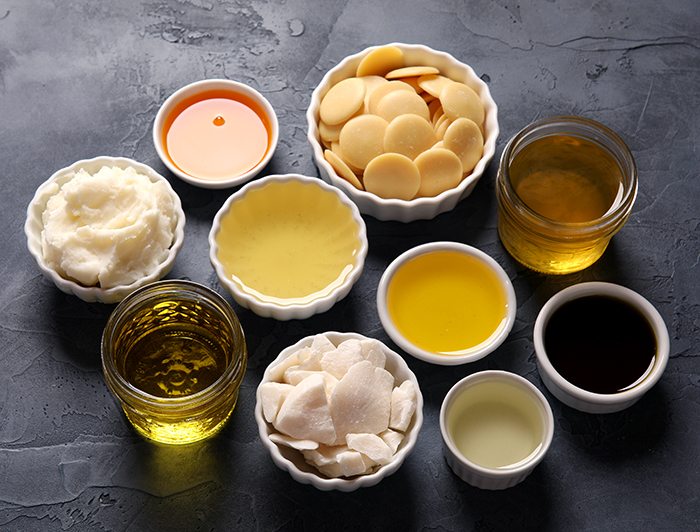
Working with lye
It's important to work with lye safely. Every time you handle it, wear your gloves, goggles, long pants and shirts, and close-toed shoes. Make sure there are no distractions or tripping hazards, and work in a well-ventilated space.
As long as you handle it properly, lye is absolutely safe to work with and the intimidation factor will go away after a few batches. To find out how much you need for your recipe, just use our Lye Calculator. It does the work for you. Learn more in the Using the Bramble Berry Lye Calculator post.
If you're not ready to work with lye, no worries! Try melt and pour or rebatch instead. Here are the pros and cons of a few soap making methods to help guide you.
Additives
Once you get the basics down, you can start experimenting with fun additives! Learn how to add color in this article, how to add fragrance in this article, and how to add exfoliants in this article.
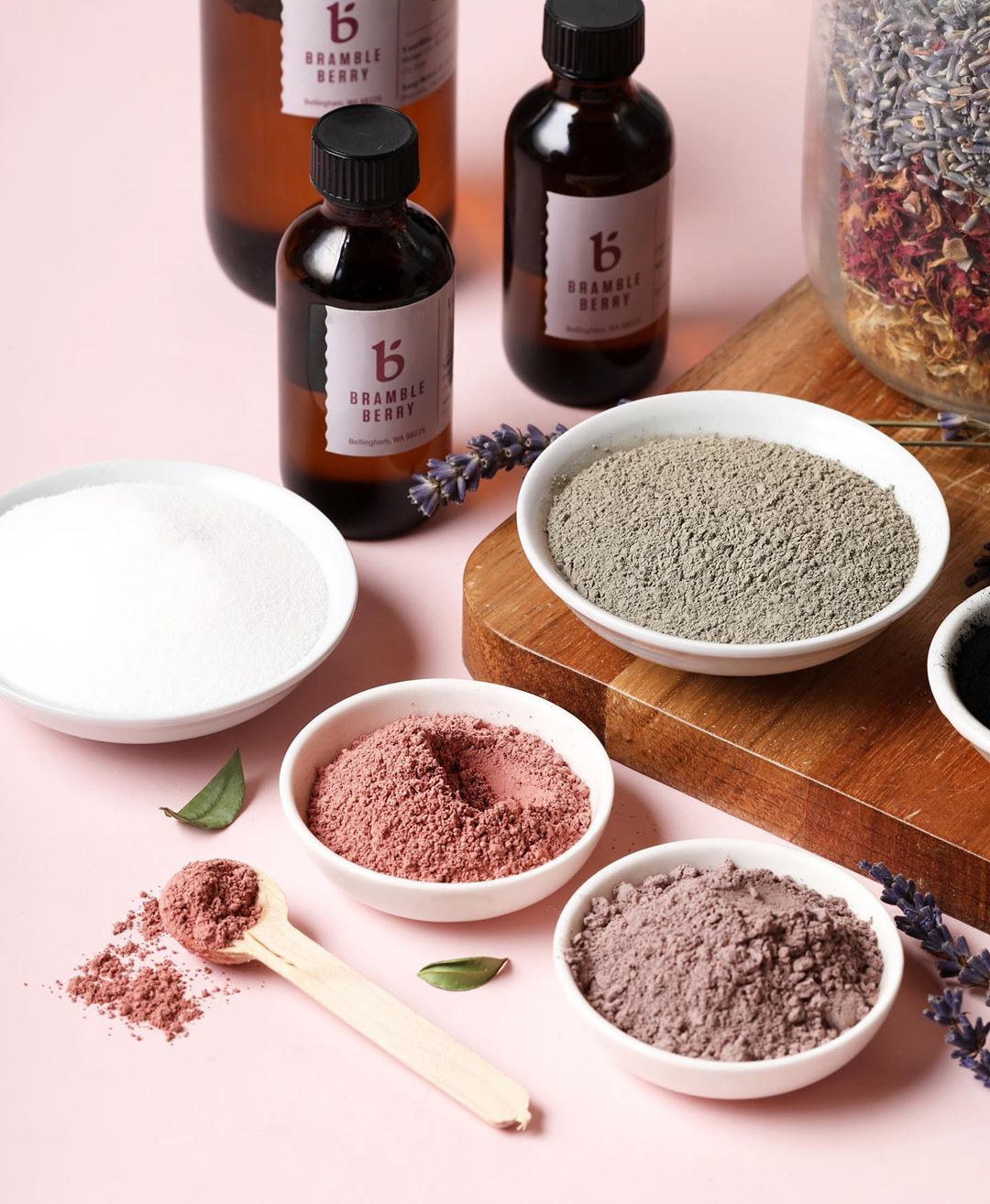
More resources
Now that you know how easy it is to make soap, it's time to get started! For more guidance, our founder Anne-Marie answers some questions about soap making in Ask Anne-Marie: Soap Making Questions. If you want to get a little more decorative, we have some tips on piping beautiful soap frosting.
We recommend easy recipes like the Kokum Butter Soap, Menthol Crystal Soap, and Pink Salt and Gold Soap to start. We also have some wonderful soap making kits that are great for beginners. Confused about the difference between kits and projects? We explain it in this article.
Most importantly, have fun! You're going to love making soap. Share what you create with #BrambleOn.

